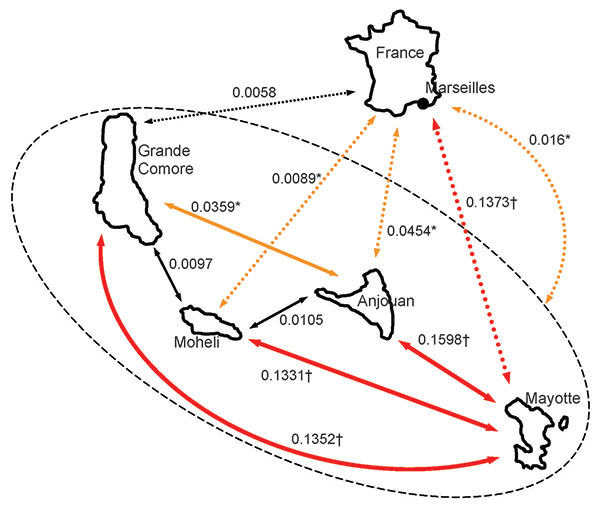Volume 16, Number 11—November 2010
Research
Genetic Structure of Plasmodium falciparum and Elimination of Malaria, Comoros Archipelago
Figure 2

Figure 2. Genetic differentiation (Fst) between Plasmodium falciparum populations from the islands of Grande Comore (GC), Moheli (MOH), Anjouan (ANJ), and Mayotte (MAY) and from Marseille, France (MARS), according to 6 microsatellite loci. Pairwise comparison among sites that used complete dataset (n = 281) and 6 microsatellite loci (Pf2689, C4M79, Pf2802, 7A11, TRAP, and C4M69). Departure of FST from 0 tested after 10,000 bootstrap simulations and by using Bonferroni corrected p values obtained after 200 permutations. Difference is significant if adjusted p<0.005. Black arrows indicate negligible (FST<0.01) and nonsignificant differentiation. Asterisks (*) and orange arrows indicate moderate (0.01<FST<0.1) and/or statistically significant differentiation. Daggers (†) and red arrows indicate important (FST >0.1) and significant differentiation. Plain arrows indicate genetic differentiation between the parasite populations of the Comoros islands. Dotted arrows indicate genetic differentiation between the parasite population imported in Marseille (from Comoros) and either the overall parasite population of the entire Comoros archipelago (dotted oval and extreme right arrow) or the parasite populations of each of the 4 islands.